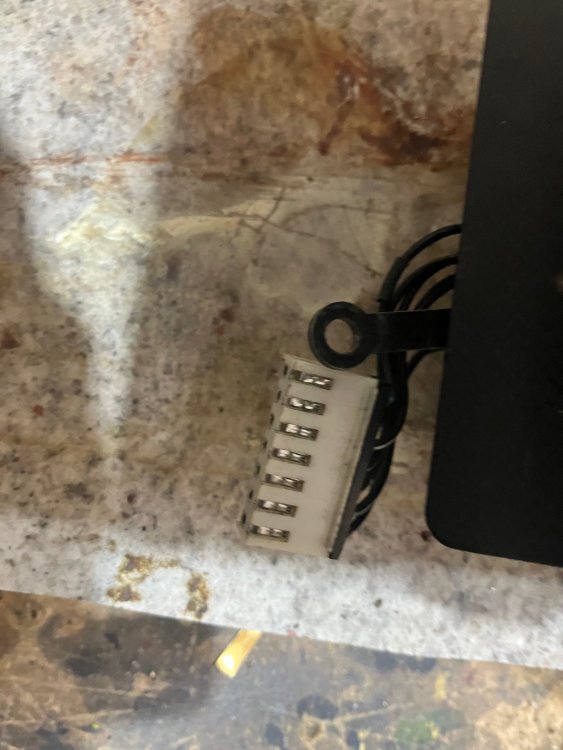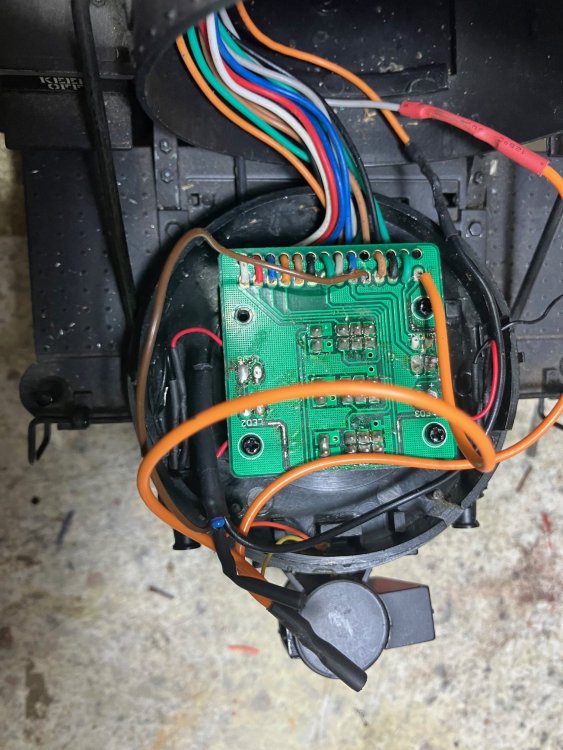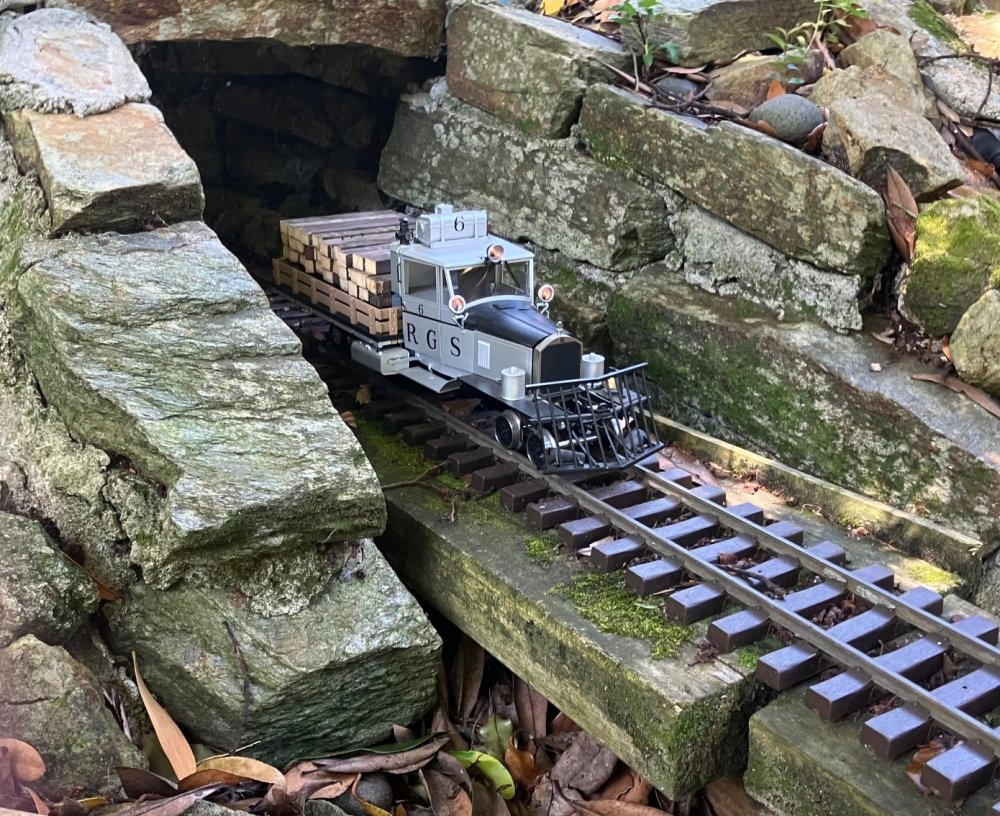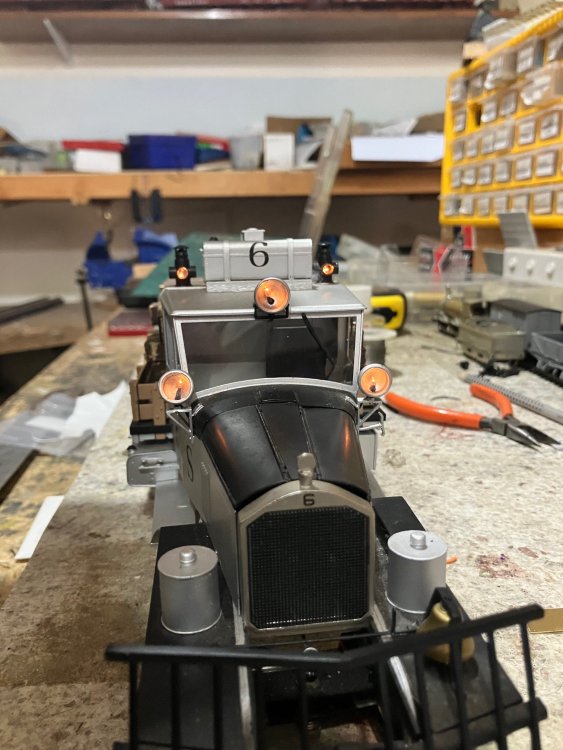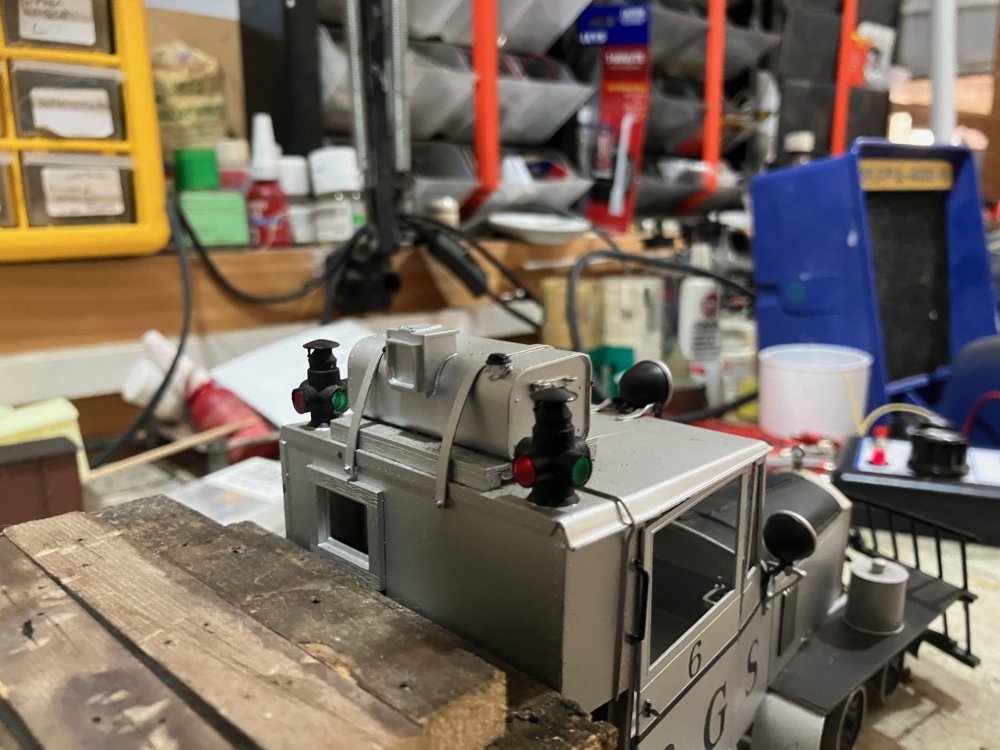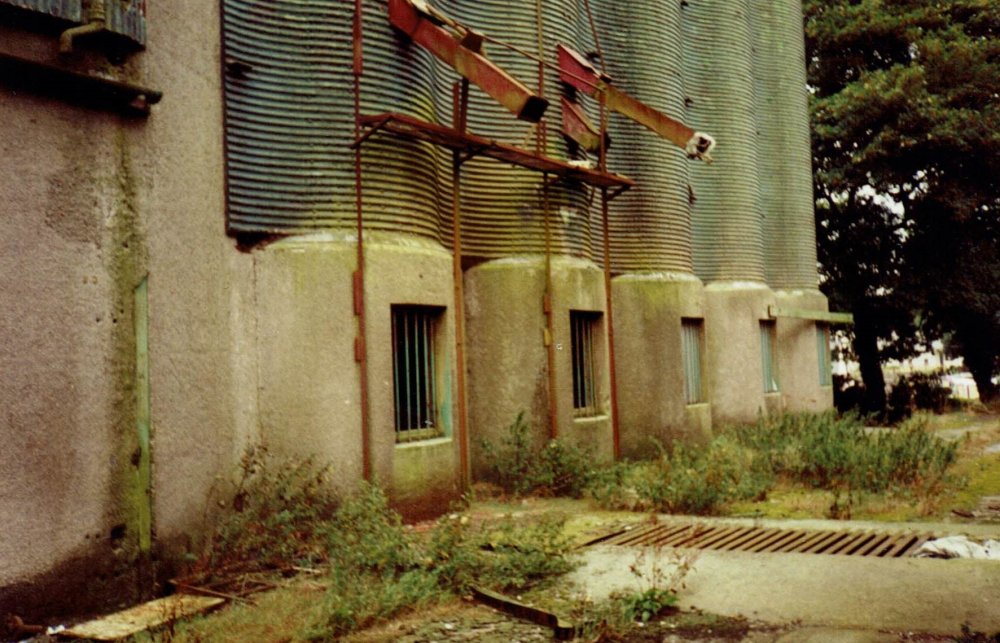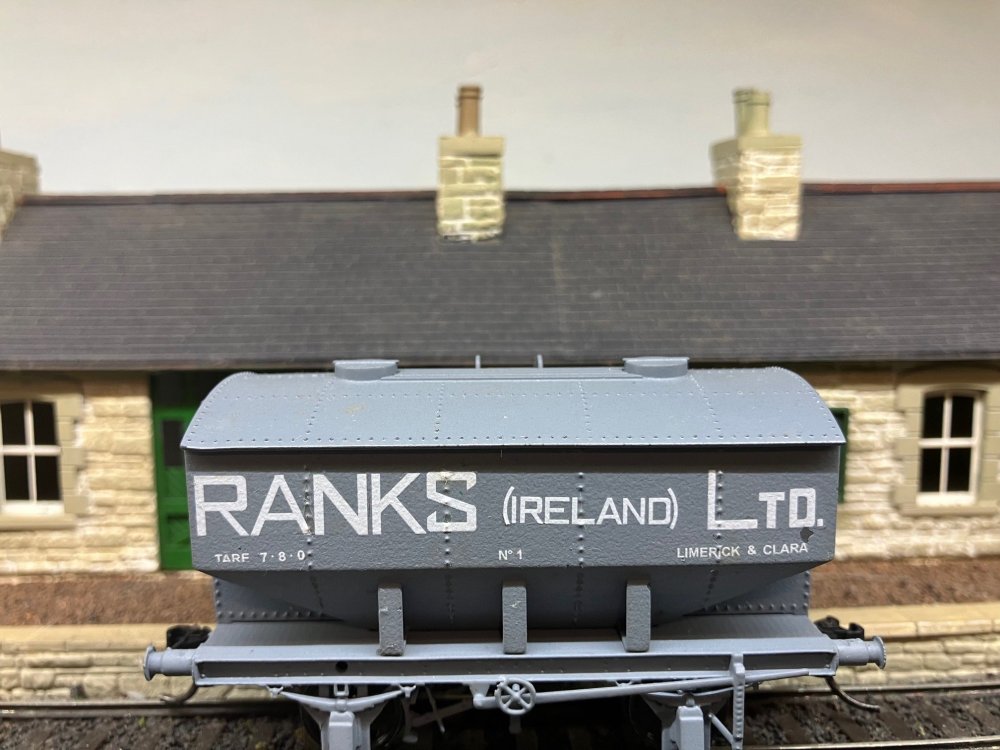-
Posts
4,879 -
Joined
-
Last visited
-
Days Won
119
Content Type
Profiles
Forums
Events
Gallery
Everything posted by Mayner
-

Small yards & locations on the irish railway system
Mayner replied to Celtic_transport's topic in General Chat
While my initial thoughts were that most of the smaller yards and private sidings had closed as CIE shifted from individual wagon load to fixed formation Liner Train operation for general freight/container traffic and Block trains for single commodities like Cement (bagged & Bulk), Fertiliser, Ores to fulfil the Railplan 80 objective of establishing a 'no shunt railway" Irish Rail began to adapt a more pragmatic approach with the hope of increasing traffic/profitability with a number of new freight flows using (underutilised/redundant stock) that emerged during the late 80s/90s mainly in connection with traffic in Animal Feed (mollasses and grain to the Midlands. Mollassess was loaded at a small bulk terminal an extension of a redundant zinc ore spur at Foynes and conveyed in block trains of previously redundant oil tank wagons (Mid 60-early 70s era) to Limerick then distriubuted by scheduled Liner Train to their final destinations Mullingar & Longford typically cuts of 6 wagons. Initially grain was carried in 20' purpose built containers on 22'wb flats at Foynes and later Waterford and railed to the Portlaoise Avonmore plant at the end of the stub of the Portlaosie-Kilkenny line. At Waterford grain was loaded on a private siding that served an IAWS elevator, in its final years grain was loaded at Dublin Port with road transfer to the North Wall yard and railed on bogie flats to the Avonmore Plant. Although unloaded on a spur outside the Avonmore plant, work had commenced on installing a run-round loop beffore the traffic ceased in the early 2000s. Its just about possible similar traffic flows might have extended to the North East if the Irish Government had been supportive for railfreight during the early 2000s. Earlier Bulk Grain and Tar Traffic (individual wagon load) increased during the mid-late 50s, but largely gone by Mid-1970s. Bulk grain tended to be handled in concrete/corrugated iron/asbestos additions to existing stone mills, tar simple siding with steam heating plant (in shed) to transfer to road tanker. Modern private sidings tended to be set up to handle 1-15 wagon trains of bogie wagons co-op siding Farranfore. Personally I think it would be easier simpler to build a mico layout set in an earlier period, industrues, railway rolling stock all operating on a smaller scale and buildings and structures architecturally more attractive and rail traffic conveyed in individual wagon load rather than the gtrain load. -
Worth enquiring with the National Railway Museum York Sharp Stewart loco drawings (most likely GAs) are included in their North British Locomotive drawing collection https://collection.sciencemuseumgroup.org.uk/objects/co27933/north-british-locomotive-co-ltd-drawings. The 7mm Narrow Gauge Society published a book of 'Irish Narrow Gauge Scale Drawings" which includes CVBT No4 and CVR Railcar 1 https://7mmnga.org.uk/sales/publications/publication_details.php?ref=NLE06. The drawings are in simplified diagram form rather than general arrangement, as far as I recall the drawing of No4 includes CVR modifications.
-
The 6 Compt 3rds appear to have gone/been converted to Turf Wagons during the Emergency I think the running numbers and other details were taken from the GSWR diagram book. The coaches with the curved in ends are likely to be ex-WLWR. I completed a pair of SSM 6wheelers in GSR livery several years ago a Lav Composite & a Brake 3rd and have another 4 GSWR 6wheelers to assemble incl a 6 Compt 3rd for a 21mm gauge Burma Rd layout if I ever get round to assembling the coaches or layout. I am planning to complete the 3rd in 1920s GSWR/GSR purple lake livery.
-
It might be worth checking with Roger/Alphagraphix whether he produced a 7mm model of Sprite. I have a sneaking suspicion that he first released an etched kit for a GSWR paycar and MGW 2-2-2T Bee/Elf before going on to produce more mainstream loco such as his range of "West Cork" tanks.
-
Yeah we have four cats (all male) and our teenager wants a horse! I had a largish stash of Leslie's wagons which hopefully I will get to build some day. We had a nice Christmas Day herself cooking turkey dinner for ma-in law and myself, while teenager spent day in their cave gaming and ordering in from kitchen. I charged the batteries on large scale locos so managed to run some trains out in the morning and home after tea. Day was warm and sunny though we are promised a downpour today, and for most of next week.
-
Back to the wreckbench to restore #464s headlight and get RGS Motor #6 head and marker lights when running in a forward direction. #464 headlight ceased to function after one of the jumper cables between the loco and tender failed several months ago. The wiring on the Bachmann K27 2-8-2 is quite complex with a circuit board in the tender and smoke box linked by a cable loom with two multiple connectors between loco and tender. The connections from the loom to the multi socket on the RHS of the loco wasn't in a great state when I picked up the loco well used second hand about 8 years ago, luckily most of the wiring was redundant since I converted the loco to on-board battery control ending up with one functional wire the -feed to the headlight which failed several months ago. The smokeboard circuit board control lighting functions, headlamp, marker, cab/possibly firebox lighting and redundant DC/DCC changeover and smoke unit switches. Original plan was to link the headlamp LED with the marker-light circuit but ended up blowing the marker light circuit instead!. In the end used a Kiwi style no 8 baler wire repair crude but effective. 1st did some testing with a multi meter and discovered that some of the loom and LED wiring did not follow the usual conventions for + - the negative lead to the headlamp was red and positive feed to the lighting circuit board white. To complicate things further I used orange and brown for + & - jumpers from the circuit board to the headlight. Actually managed to run some trains on Christmas Day. Thankfully #464s headlight fed through a resister now works, though I have not connected the marker (classification) lights. Apparrently marker lights were not usually illumiated in daylight. Motor #6 is fitted with very small filiment bulbs rather than LEDs, capture the atmosphere of 1930s 6v automobile headlights. Looks like the prototype may have kerosene marker lights, possibly from a caboose. The RGS was very much a boot strap operation that would make Forbes County Donegal extravagent in comparisson. Interestingly the entire RGS Goose (Motor) fleet has survived some in operating order on heritage lines and museums in Colorado & California, someone actually built a replica of the origonal goose Motor 1 which was used as a source of parts to build Motor 6 during the mid-1930s Getting #6 lights functioning going forward was basically a case of soldering a jumper between the F & R lighting pads on the radio receiver/decoder
-
I experienced similar issues accessing both this newsgroup and in accceesing the Accurascale website during the past week, otherwise no problems with internet access here in New Zealand or internationally.
-

"Voiding the Warranty" - Mol's experiments in 21mm gauge
Mayner replied to Mol_PMB's topic in Irish Models
Probabably worth checking out firms in the jewellery sector in Birmingham that carry out brass/lost wax casting. I have used a local business that carries out lost wax casting to produce brass castings from metal, resin, plastic masters and 3D models to produce brass castings including buffers. -

"Voiding the Warranty" - Mol's experiments in 21mm gauge
Mayner replied to Mol_PMB's topic in Irish Models
Bulkgrain loading/discharge arrangements at Ranks Clara The grating is likely to have been used for grain truck discharge after rail operations ceased, probably on top of an original rail discharge pit. A similar grating may have been used for rail discharge, possibly for one wagon linked by conveyor to the elevator system There was a concrete slab complete with two inset sidings when I visited the site 30 odd years ago, one of the sidings served a large grain elevator and a small dry corrugated good store, the second siding served a second larger dry goods store. -

"Voiding the Warranty" - Mol's experiments in 21mm gauge
Mayner replied to Mol_PMB's topic in Irish Models
Webbs Mill/Quarterstown may have focused on processing animal feed following the Cork Milling Co takeover. Mallow is an important dairying centre, its likely that the mill processed corn (maize) imported from the States as supplementary cattle feed during the winter/spring. Interestingly the Dairygold Mallow powder milk plant is similar in scale to plants in the Waikato and likely to have exported milk powder by rail through the Mallow. https://en.wikipedia.org/wiki/Dairygold. It looks like CIE experienced a signifiicant increase in bulk grain traffic during the mid-late 50s with the construction/modification of H Vans to Bulk Grain wagons, previously CIE had a total of 18 Bulk Grain Wagons built by the GSR during the mid-1930s, 10 railway owned wagons, 8 owned by Ranks Ireland for its own traffic. There is a photo in the NLI O'Dea collection of bulk grain being transferred from an ex-GS grain wagon to a truck at Fermoy station during the early-mid 60s. The grain was transferred from rail to road using a small portable (probabably petrol powered) screw conveyor) that allowed the graiin to be unloaded at track level without the aid of a pit. -
I used an LGB 22 Volt 2 amp combined controller and power unit while running analogue power before converting to DCC using a mid level Digitrax (Empire Builder) command station on the 5amp setting. I have used battery RC control for the past 10 years locos powered by pairs of 7.2v 3000ma NiMH batteries (14.2V). Unlike DCC radio control systems are produced by cottage industry suppliers such as RCTrains https://www.rctrains.co.uk/, probabably best to contact the Gauge 1 Society or Garden Railway groups if your looking at usingb battery RC.
-

"Voiding the Warranty" - Mol's experiments in 21mm gauge
Mayner replied to Mol_PMB's topic in Irish Models
In good company, apparrently the GSR manged to spell Drumshanbo incorrectly in both Irish and English on the bilingual station nameboard Possibly someone in authority knowing better or failing to check the spelling/pronounciation with the locals -

"Voiding the Warranty" - Mol's experiments in 21mm gauge
Mayner replied to Mol_PMB's topic in Irish Models
A product of the Irish education system with good grade in Irish when I completed my Leaving Cert 50 years ago I still haven't got my head around the pronounciation and use of the 'fada' and as they say the séimhiú "was in my fathers time" and he spoke about being put off Irish when a new teacher introduced the Munster (Kerry) dialect in a Galway school! Had fun and games with my Irish (Dub with a country accent) pronouncation of UK and some US placenames but eventually learned to pronounce some Welsh and Kiwi place names correctly mainly by listening to the locals. Back to Pauls dilemma, I don't think a GSR/CIE style bi-lingual signs board would be appropriate for a private siding, I seem to have mislaid my copy of a 1960 CIE WTT and unable to check the 'official railway" name of the siding. Its possible the Webb family may have sold the mill at some stage following the establishment of the Free State, Quarterstown House had been converted to a convent by the 1940s. Milling was supposed to have ceased by 1957. Cold Chon may not have bothered to advertise their presence signed into a long term contract to supply tar to the nearby Cork County council road depot and the 'mill owners" much incentive to maintain the place. The Land Commission began to acquire large country estates and divide the land into small holding from the early 1900s onwards, many of the large Country Houses were sold to religious orders or prominent Irish people during the 20s and 30s as members of the 'gentry' returned to the UK or consolidated their Irish holdings. A sign in the style of a Webb Milling sign or seal or a Quarterstown roadsign may be more appropriate. For many years the name of small towns/villages such as quarterstown were displayed on simple square road signs (black border and lettering on white background) in similar style to pre-1960 UK roadsigns https://www.hattons.co.uk/52086/ancorton_models_n_605_pre_1960_s_road_signs_set_5/stockdetail?srsltid=AfmBOorag12QA99NdUrAy8Z3h9lTVW5mF9PelAQm2nv1AqPb7N4_xe34 (without red triangle!) From memory names were sometimes in English or bi lingual cannot find a photo! -
Applying waterslide transfers over rivets/raised detail is bascially a case practice and suitable preparation and selection of suitable transfers, wetting agents & varnish/sealant. N Scale Lehigh Valley Diesel. One my pride and joy, very much a hard worked 'layout loco' I finished the loco in LV livery about 25 years ago using Microscale waterslide decal set, incl black/white nose/pilot stripes s, Micro-Set (wetting setting agent) Micro-Sol (solvent/softner) around details/irregular surfaces. Loco painted in a gloss aerosol red then, then finished with a semi matt aerosol. Paint did not adhere too well to handrails which were molded in a black flexible plastic. 4mm Ranks Ireland wagon (Enlargement shows up the blemishes!) Decals comissioned from Railtec Transfers, Humbrol Decalfix (recommended by Railtec, Micro-Set Micro-Sol incompitaible). Main challenge was applying large RANKS (Ireland) Ltd element of decal due to its sheer size, applied RANKS (Ireland) Ltd as 3 separate decals! (Ireland) after applying the two larger decals! Again model first spray painted grey with a gloss finish and then sealed with a matt/semi-matt finish once decals had dried out I originally intended to have the decal pad printed comercially, but printer declined to print further wagons after pad printing the initial batch of 20T Brake Vans
-
I agree with Andy that it would be best to start out with re-scaling one kit to 4mm both in terms of identifying any pitfalls in rescaling a model from 7-4mm scale and overwhelming the (very small) market for 4mm Irish outline kits. I usually managed to sell a minimum of 10 JM Design kits on the initial production run, though demand/sales for the MGWR Vans and the 4w Bulleid PO Van were significantly lower than other kits. A 4mm Alphagraphix J26 would largely duplicate the SSM MGW E Class/J26, the Alphagraphix kit appears to be based on a loco in late GSR/CIE condition with riveted smokebox, while the SSM kit in includes parts to assemble a loco in MGW/GSR condition with flush smokebox and parts to assemble the Tramore version of the loco with extended cab and recessed cab steps, so something of a Catch 22 situation, though I prepared an etched overlay for a riveted J26 smokebox. A J18/19 has been on my to do list for 40 years, so I'll put my hand up for two. John
-
Nickle silver basically a superior material to work, basically stronger, easier to solder and easier to paint compared to brass. Best contact Des on availability, Studio Scale models traditionally held kits in stock though may have shifted to supplying kits to order. Des supplied tender etchs and castings at relatively short notice for a GSWR 52 Class 4-4-0 I produced several years ago.
-
Studio Scale Models already produce a 4mm model of a Bandon Tank both roundtopped and Belpair firebox versions. https://www.studio-scale-models.com/B4.shtml
-
An important point to check with Roger is whether a 4mm loco chassis produced from 7mm artwork/photo tooling will be suitable for a OO gauge loco. The width over chassis on a 4mm loco produced from re-sized 7mm/Gauge 0 artwork may be too wide for OO. Alternatives would be: (a) to re-design the existing chassis so that its suitable for OO gauge (width over frames 12mm) or (b) the buyer purchasing proprietary etched or turned frame spacers and assembling the chassis as a conventional chassis. Although my 4mm MGW vans were designed to be assembled to OO or 21mm gauge, it was necessary to re-design the chassis when I re-scaled the artwork to 2mm scale for a customer.
-
I once thought of modelling the Irish Broad gauge to 8.57mm scale on Gauge 1 track to run on my Large Scale(1:20.5) scale garden railway (45mm gauge). Like Sam Carse moellers of the NZ 3'6" gauge tended to chose a proprietary track gauge and vary the scale to acheive the correct scale/gauge ratio. With few kits and an absence of any broad gauge Irish RTR Gauge 1 is essentially a scratchbuilders scale for the G1 modeller. One of the main differences between modelling in larger scales like Gauge 1 and the smaller scales is that large scale modellers tend to bring locos/stock to run at club/group meetings and each others railways https://www.g1mra.com/joining-g1mra/local-groups/. In the end I did not pursue the idea of modelling the Irish Broad gauge in 8.57mm as I already had more than enough 4mm modelling projects than I could manage and instead decided to focus on American 3' gauge using proprietary 1:20.3 scale in the garden. At the time I would probabably scratchbuilt or used etched brass/laser cut ply to produce locos and stocks, these days I'd probably use 3D printing for chassis, bodies and mechanisms similar to some 9mm Scale NZR modellers
-
I5 or so years ago i painted one side of my Worsley Works Laminate & Park Royal CIE late 50s green opposite side in Black & Tan and picked out the windows on a SSM Bredin in silver, I finished my Bredin set (1 Full Brake, 2 Comp) in late 50s green, though none of these (21mm gauge) coaches have ever operated on a layout, perhaaps some day?
-
Richard Chown's original Castlerackrent Irish outline 7mm broad gauge layout was apparrently based on a WLWR branch line running westwards from Tuam into Joyce Country, potentially Maam Bridge or even Leenaun on Killary Harbour While the Alphagraphix J26 can be modified relatively easily to GSR or even MGW condition by modifying the smokebox and boiler fittings, the Alphagraphix G2 and J18 are based on the locos in late GSR/CIE condition with superheated belpair boilers and modified cabs, requiring major modification to model either class in MGW or early GSR condition.
- 37 replies
-
- 3
-

-

-
- o gauge layout
- irish outline
- (and 2 more)
-
Back to the workshop to keep Bachmann K27 464 on the road until it disintegrates. The locos was last in the shops in July for emergency repairs after the engine tender coupler failed when the loco pulled the dragbox out of the tender. The loco operated reasonably reliably until the end of the winter season despite the leading pony truck occasionally de-rail and the loco ceasing to chuff, though other sound functions continued to operate normally. So finally time to bring the loco into the shops to carry out modifications to the leading truck and trouble shoot the sound system, before tidying up the workbench to resume working on small scale stuff! The problem the Pony Truck. The original (plastic) pony truck dissintegrated several years ago and I fabricated a replacement (to the origonal design)from brass bar and plate though the leading wheels tended to run at an angle to the track due to the relatively short distance between the pivot and axle. The leading end of the diecast frames/pilot (a weak point of the design)had fractured (metal fatigue) which I patched several years ago with brass strip and bolts. The solution increase the distance between axle and pivot point. I increased the distance using a piece of brass plate I had in stock, bolted and soldered to the existing truck boring out the necessary holes with a pillar drill. Next step was to drill & tap a 5mm dia hole (to take a n m6X1mm tap) in the frames close to the end point of a plastic guide/suspension beam intended to control latteral and vertical movement of the leading truck. Time for the nitty gritty getting in with an M6 X1mm tap! The modified pony truck. I originally intended to use a turned brass pivot bolt that would screw into the chassis, unfortunately the screw thread cut in the brass with my 6M-1mm die did not match the hole tapped in the chassis (possibly softness of the brass) but accepted an M6 x1mm bolt I had in stock! I did not want the securing bolt to be continuously working loose in service, so I machined a brass spacing bush with a collar which both helps keep the pony truck pivot at the correct height and allows the truck to pivot from side to side. I retained part of the Bachmann suspension/guide beam which includes a sprung plunger which hopefully will help keep the pony truck wheels in contact with the track. Apart from some adjustment to increase vertical play the loco ran successfully without de-railing the leading truck on several test rund. Why no Chuff-Chuff? 2000 era Large Scale Plug & Play DCC/RC decodersThe exhaust chuff is controlled by a reed switched operated by a pair of magnets on one of the tender axles. Trouble shooting involved removing the tender body and checking through the rats nest of wires, thankfully one of the wires from the reed switch had come adrift from the large terminal block in the right centre of the photo. Bachmann introduced the K27 in 2007 with a Plug n Play interface for DCC decoders & RC power controllers not exactly compact or P&P but allowed me to convert the loco to battery RC without having to totally re-wire the loco! The large 8 pin terminal block is basically for controlling sound and lighting functions. The 6 pin + - 1-4 power control functions, small terminal on right next to power controller connections from radio receiver. Small board on tender floor in centre of loco sound controller with large speaker hidden beneath main power board and main batteries. Small board on left of tender power on/off to loco /charger switch. Batteries are 7.2V 3000ma/h like the Drumm batteries of the 30s good for approx 4 years at this stage #464 is on her second set of batteries. Tender body replaced! Radio receiver on board on far right loinked by 'servo leads" to power control board. Radio control system K27 and other Bachmann large scale locos originally produced by RCS systems (late Tony Walsingham) (Australia) during the late 2000s. Significantly smaller combined radio receiver/power controllers have been released in recent years not dissimilar to DCC decoders, my Accuracraft K27 has a significantly smaller receiver/power controller and much more simple wiring! Interestingly main complaint about the Bachmann K27 was cranks working loose when the loco was originally released, problem appears to have been resolved in the second batch released in 2008 my #464 appears to be from the 2008 batch and no problems with cranks, but almost everything else.! Though not bad when considering a 17 year old loco that appears to have been worked fairly hard before I picked her up. Remaining repairs to #464 include reinforcing sections of cab which have become brittle/damaged and wiring repairs to loco headlight and classification lights which failed in recent weeks.
-
There is a long tradition of (often young) volunteers travelling great distances to work on railway restoration projects. ITG members regularly crossed the Irish Sea from the Midlands and North (of England) to work at their base at Carrick on Suir and no doubt Inchacore and Downpatrick and help out on other Irish perservation projects. Back in the day (30 off years ago) I regularly (fortnightly) made a 440 mile round journey by car from Watford to Portmadoc to Volunteer on the Welsh Highland Heritage Railway, at one stage I was living in Scotland and made a monthly 672 mile journey from Stirling to Port to carry out substructure work for the RED shed. As shuttering carpenter my job was to set up the shutters and holding down bolts for a pour by our concrete gang who made a 479 mile round trip by car from West London. Sometime I travelled by rail from Stirling to Warrington where I was picked up by a group of volunteers who regularly travelled by car from York to Port, other time I drove. We were mainly single guys with reasonably well paid jobs without family responsibilities, though a younger generation of volunteers teens and 20s had began to become involved, some of whom have become long term volunteers/company officers. One significant differences between the Festiniog, Welsh Highland Heritage and other heritage railways in the UK, is that both the FR & WHHR provide overnight volunteer accommodation, the Festiniog Hostel and the WHHR caravan accomodation owned by volunteer groups. Interestingly vintage carriage restoration/construction is mainly lead by a volunteers of a younger age group focused on the heritage aspect of the railway, while the older generation of volunteers/members were mainly focused on building a narrow gauge modern railway.
-

British locos and stock that can be disguised as Irish
Mayner replied to Westcorkrailway's topic in Irish Models
Only very late 60s/early 70s don't remember the specific year or edition. The modelling was fairly basic in nature buildings scratchbuilt in plain card capturing the basic shape and curved roof profile of the buildings. As far as I recall there was no attempt to form or represent the profile of the corrugated iron, which at the time would have been challenging without specialist tooling/equipment. -

British locos and stock that can be disguised as Irish
Mayner replied to Westcorkrailway's topic in Irish Models
The 3F, Jinty, Diesel shunter wheelbase was reasonably close to some of the ex-GSWR J4 & 9 and ex-DSER J8 Classess introduced post 1900 and the ex-DSER K2 2-6-0 locos. Main gap is a suitable donor chassis for the midland Cattle Engine with its large wheels and relatively short wheelbase for a large 0-6-0 Not sure of Hornby still produce a "Railroad" version of the Jinty or diesel shunter, or Bachmann their 3F or 4F though both Hornby & Bachmann 0-6-0s may be available second hand. https://transportsofdelight.smugmug.com/RAILWAYS/IRISH-RAILWAYS/CORAS-IOMPAIR-EIREANN-STEAM/i-wm6ZNd8/A J4 262 https://transportsofdelight.smugmug.com/RAILWAYS/IRISH-RAILWAYS/GREAT-SOUTHERN-RAILWAY-STEAM/i-LPvqkcW/A J9 351 some members of J9 Class built with raised running board similar visually similar to J4 Class https://transportsofdelight.smugmug.com/RAILWAYS/IRISH-RAILWAYS/GREAT-SOUTHERN-RAILWAY-STEAM/i-XchX5K9/A J8 445 https://transportsofdelight.smugmug.com/RAILWAYS/IRISH-RAILWAYS/GREAT-SOUTHERN-RAILWAY-STEAM/i-3tnG9Dc/A J8 444 A London based member of the "Malahide & Dromin Junction group used the Triang Hornby L1 as a donor chassis for an ex-GSWR D2/321 Class 4-4-0 and the 0-6-0 chassis for ex DSER J8 444. Other locos included a GNR Compound and possibly a JT 2-4-2 produced by the late Harry Connaghton a Dublin based professional modelmaker who produced models of Irish Locos and stock in 4 & 7mm scale during the 1970s. The Malahide & Dronin Junction was exhibited at the Kilkenny Shop Dawson St during the late 70s before being exhibited for a period at Shannon Airport
.png.c363cdf5c3fb7955cd92a55eb6dbbae0.png)

